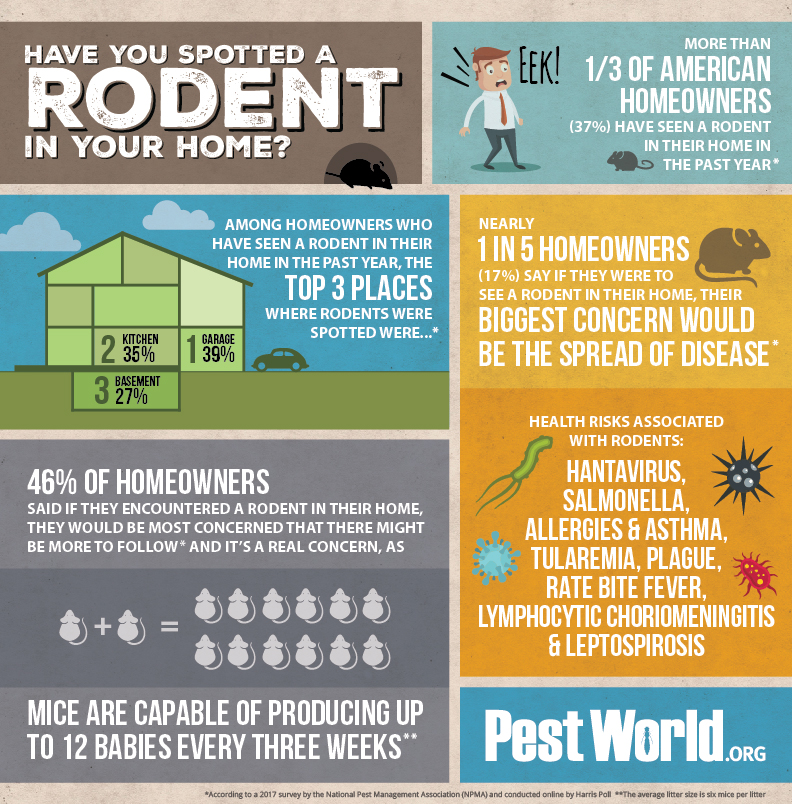Utilize The Power Of Comprehending Rodent Nesting Practices To Outsmart These Animals And Master Your Rodent Control Techniques
Utilize The Power Of Comprehending Rodent Nesting Practices To Outsmart These Animals And Master Your Rodent Control Techniques
Blog Article
Created By-Bridges Doyle
When it concerns rodent control, recognizing common rodent habits is vital to successfully managing infestations. Did you understand that rodents have some interesting nesting practices that might stun you? By exploring their complex actions, you can obtain valuable insights right into how to take on rodent issues in a more tactical and reliable manner. So, allow's unravel the mysteries behind these animals' actions and learn exactly how to outmaneuver them in your rodent control initiatives.
Rodent Nesting Habits
When observing rodents in their natural habitat, you'll see that they proactively look for materials to construct their nests. Rodents, such as mice and rats, are clever creatures that make use of a variety of products like twigs, leaves, paper, and textile to build their homes. They're thorough in their nest-building process, commonly lining their nests with softer materials like fur or feathers to produce a cozy environment.
Rats favor to build their nests in covert and secure areas to shield themselves and their young from predators. Common nesting spots include wall surface dental caries, attic rooms, cellars, and also within insulation materials. By creating their nests in these remote areas, rats can safely raise their children far from prospective risks.
It is vital to understand the nesting practices of rats when carrying out control measures. By disrupting their nests or removing materials, you can dissuade rats from establishing a visibility in your house or residential property. just click the up coming page and sealing access factors are also essential action in protecting against rodent invasions.
Rat Feeding Patterns
After observing rodents' nesting routines, it ends up being apparent that their feeding patterns play a critical duty in their daily lives and habits. Rodents, consisting of computer mice and rats, are opportunistic feeders, meaning they'll consume whatever food source is readily offered. They're mostly nighttime creatures, preferring to forage for food during the cover of night to prevent killers.
Rodents have a diverse diet, varying from grains, seeds, fruits, and vegetables to bugs, nuts, and also little animals. This versatility in their food choices enables them to prosper in numerous settings, consisting of metropolitan areas where human food resources are bountiful.
Their feeding patterns aren't just driven by cravings however also by the demand to accumulate food for times of shortage. This behavior is specifically visible in preparation for winter months or when nesting. Rodents are known to hoard food in their nests or burrows, ensuring a continuous food supply. Recognizing their feeding patterns is important in carrying out effective rodent control procedures to interrupt their food resources and stop infestations.
Rodent Movement and Traveling
Rats navigate their environments with agility and stealth, using their eager senses to relocate quickly through their atmospheres. These creatures are experienced climbers, able to range walls and upright surfaces easily. They can also press with surprisingly tiny openings, making it critical to seal off any kind of prospective access points in your home.
When it involves taking a trip, rats often tend to adhere to acquainted paths, producing tracks along wall surfaces or skirting the edges of areas. They're creatures of habit, typically adhering to these established paths as they forage for food or explore their environments.
Rodents are recognized for their nocturnal behaviors, so you might hear them hurrying about at night as they look for food and water. Their activities are quick and irregular, enabling them to dart in and out of view in the blink of an eye.
Comprehending exactly how rats relocate and travel can assist you recognize possible problem areas in your house and take positive steps to avoid these insects from obtaining a grip.
insect control company
As you work to regulate rats in your home, bear in mind that understanding their habits is vital. By recognizing their nesting habits, feeding patterns, and activity, you can effectively stop infestations.
Coincidentally, by taking proactive steps to eliminate food resources and seal access points, you can disrupt their familiar courses and compel them to look for new locations, eventually decreasing the likelihood of rodent presence in your space.
